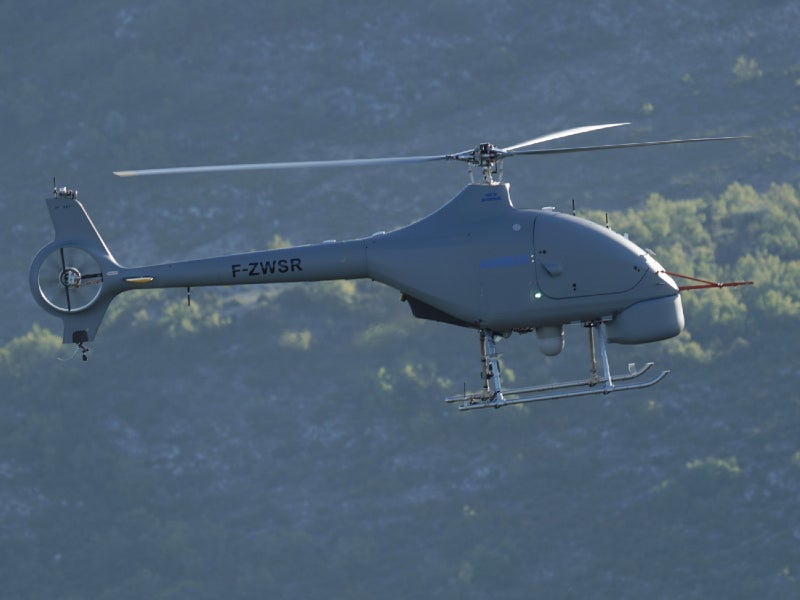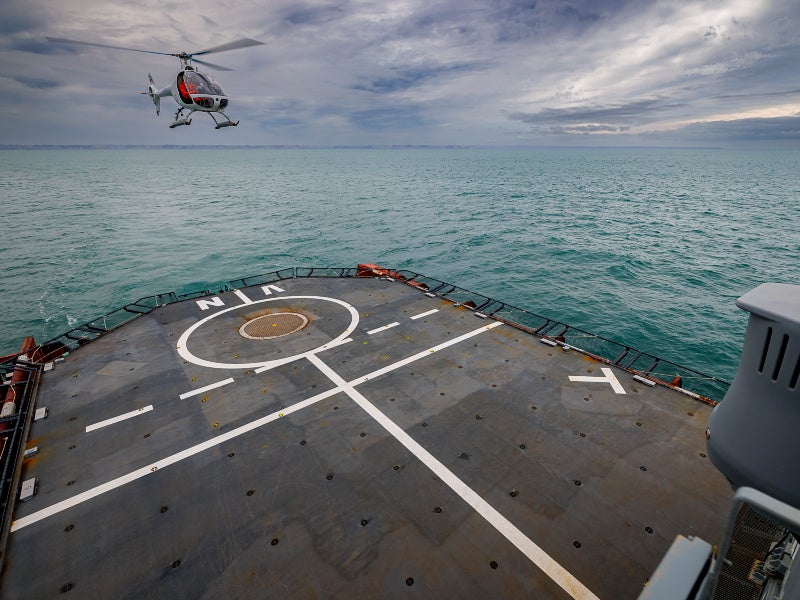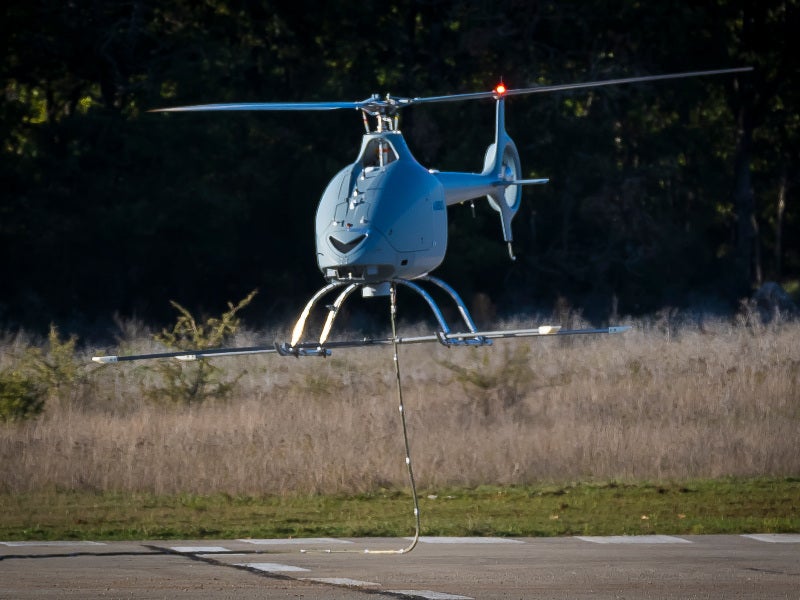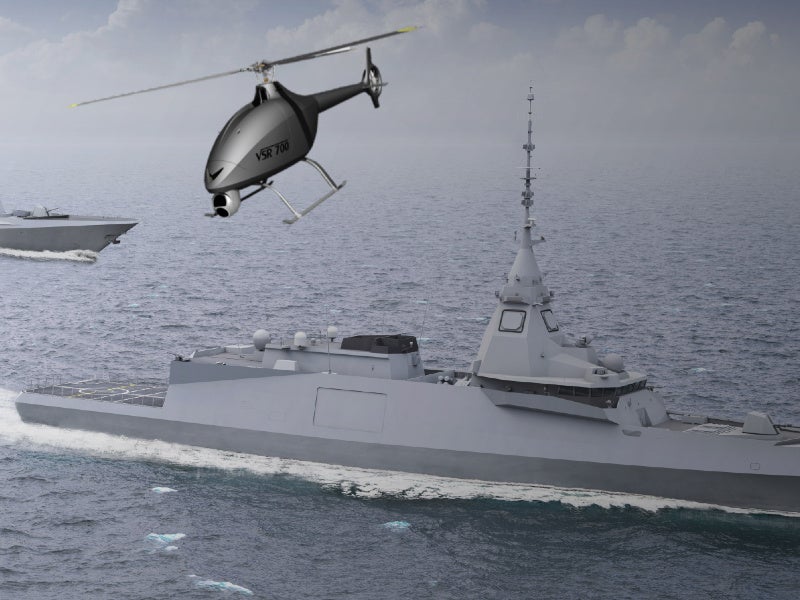VSR700 is a multi-mission naval unmanned aerial system (UAS) being developed by Airbus. Based on Hélicoptères Guimbal’s Cabri G2 helicopter, the VSR700 is a light military tactical UAS designed to meet the challenging requirements of global navies.
The smaller size of the vertical take-off and landing (VTOL) UAS allows naval forces to position several VSR700s along with naval helicopters aboard frigates and destroyers. The operating cost of the UAS is much lower compared to that of a naval helicopter.
VSR700 will present a large and clear tactical picture of maritime environments and provide greater autonomous search and rescue (SAR) capability to operators.
Direction générale de l’Armement (DGA), the French government defence procurement agency, awarded a contract to the consortium of Airbus Helicopters and Naval Group to develop a VSR700 demonstrator, in January 2018. The purpose of the contract was to identify, deploy and test the technologies needed to integrate a tactical drone system into a heavily armed vessel. The contract for the second VSR700 UAS was placed by the DGA in April 2021.
VSR700 flight tests
The testing phase of the VSR700 VTOL aircraft started in June 2017. The UAS made its first flight at a drone test centre in France in November 2019, while the first fully-autonomous take-off and landing operation over a moving platform was demonstrated in November 2020.
In the first quarter of 2021, the UAS demonstrated a test flight that pushed its speed limit to 60kt (111km/h), after entirely opening its flight envelope at low speed.
Trials for autonomous take-off and landing at sea started for the French Navy in early 2022. The tests will pave the way for an upcoming demonstration of the aircraft’s capabilities aboard a French Navy frigate.
Airbus also conducted tests to evaluate the autonomous take-off and landing capabilities of the VSR700 aboard a civilian vessel with a helicopter deck, offshore Brest, France, in March 2022.
VSR700 design and features
The compact dimensions and discreet silhouette of the UAS improve its stealth capability. The UAS can carry a full tactical load of sensors for long durations, which is considered to be an optimal capability enhancement for modern naval forces.
VSR700 is 6.2m (19.6ft) long and 2.28m (7.4ft) high. Its main rotor diameter is 7.2m (23.5ft). The maximum take-off weight of the UAS is 700kg (1,543lb).
Payloads
VSR700 can carry a range of payloads including electro-optics/infrared (EO/IR) sensors, a radar, communication intelligence (COMINT) systems, and an automatic identification system (AIS).
The aircraft is equipped with Airbus DeckFinder™, a local positioning system that helps in determining the position of manned and remotely piloted aircraft. This makes it easier and safer to take-off from and land on small or moving helidecks.
The UAS can complement traditional search and rescue assets through its SAR payload including high-quality sensors. With its capability to remain airborne for up to ten hours, the UAS can help in finding survivors in harsh conditions.
Mission capabilities of VSR700
The autonomous aircraft extends the ship’s reach and can complement a naval force through its intelligence, surveillance, targeting, and reconnaissance (ISTAR) capabilities while also freeing up helicopters for core missions.
It can create an anti-submarine warfare (ASW) barrier and extend the ASW capability of a ship or a helicopter in a manned-unmanned teaming (MUMT). It can also relay the sonobuoy data for an unbroken data stream back to the ship.
The unmanned aircraft, with low noise and a high degree of persistence, can detect and identify periscopes of submarines using high-performance, long-range radar and electro-optic sensors, making it a formidable deterrent force.
The VSR700 aboard the ships can support multiple missions including anti-terrorism, counter-smuggling, fishery protection, monitoring and locating refugees or illegal immigrants, and coastal surveillance. It can monitor events and provide high-quality data to authorities while remaining undetected.
Propulsion and performance
The UAS is propelled by an aviation-certified engine burning either diesel or jet fuel. It can stay airborne for more than ten hours and offers an endurance of eight hours with a full tactical load.
The maximum speed of the unmanned aircraft is 185km/h and its certified ceiling is 6,000m (19,685ft).







